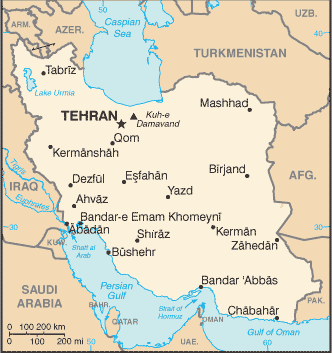In its latest report, the U.N.’s nuclear watchdog said it continues to have serious concerns about a possible military dimension to Iran’s nuclear program, despite the highly questioned November report and U.S. intelligence to the contrary.
 In a confidential document, the International Atomic Energy Agency (IAEA) claimed Iran had stepped up its uranium enrichment at a number of facilities. According to the IAEA, the facility at Natanz, for example, is operating 52 cascades – each containing around 170 centrifuges – up from 37 in November.
In a confidential document, the International Atomic Energy Agency (IAEA) claimed Iran had stepped up its uranium enrichment at a number of facilities. According to the IAEA, the facility at Natanz, for example, is operating 52 cascades – each containing around 170 centrifuges – up from 37 in November.
“The Agency continues to have serious concerns regarding possible military dimensions to Iran’s nuclear program,” the U.N. body said in its latest quarterly report about Iran’s atomic activities.
But the IAEA’s report in November has been widely criticized. Former IAEA director and nuclear engineer, who saw first hand the mistakes in Iraq, Robert Kelley wrote last month that “the evidence, contained in a November report of the International Atomic Energy Agency, is sketchy.” Beyond that, the report’s speculation was not enough to change their estimate that Iran has not diverted any declared nuclear material to facilities potentially engaged in weaponization.
But the basis for that speculation is incredibly weak. The IAEA claims that they have been “unable to provide credible assurance about the absence of undeclared nuclear materials and activities in Iran.” In other words, a lack of evidence for nuclear weapons is the primary concern.
The most extensive and widely accepted U.S. intelligence on the Iranian nuclear program says that Iran probably had a nuclear weapons program, but halted it completely in 2003. In a comprehensive New Yorker report by Seymour Hersh, the 2011 report from the U.S. National Intelligence Estimate (NIE) was “reinforcing the essential conclusion of the 2007 paper: Iran halted weaponization in 2003.”
In the November IAEA report, Kelley writes, almost all the evidence for a possible military dimension speaks to pre-2003 activity. That which points to post-2003 activity either “had suspicious similarities to a previous case [in 1995] that proved definitively to be a hoax” or was sourced from unnamed member states, which was vague and “impossible to evaluate.”
Greg Thielmann, a former State Department and Senate Intelligence Committee analyst told the New Yorker in November that the IAEA report was being politicized. He said “there is nothing that indicates that Iran is really building a bomb.” adding that “those who want to drum up support for a bombing attack on Iran sort of aggressively misrepresented the report.”
Numerous current high level U.S. officials have come out to explain that their best intelligence finds Iran is not developing nuclear weapons and has demonstrated no intention of doing so. An article published Thursday in the Los Angeles Times reported that the most recent NIE, “which represents the consensus of 16 U.S. intelligence agencies, indicates that Iran is pursuing research that could put it in a position to build a weapon, but that it has not sought to do so.”
Iranian policy for some time now has been to abstain from developing nuclear weapons while having the know-how needed to get there; this essentially is an attempt, given constant threats and military provocations from the U.S. and Israel, to have a deterrent without having a deterrent.
In fact, other than hawkish politicians prone to rhetorical flourishes, the IAEA seems to be the only official body willing to claim Iran may have a military dimension to its nuclear program. Even the Israelis haven’t denied the U.S. intelligence demonstrating otherwise, but they have been insisting a preemptive strike is necessary in order to disable Iran’s enrichment activities before entering a “zone of immunity.”
This is very irrational since underground facilities like Fordo are beyond the reach of Israeli bombs and Iran, if attacked, would be likely to quickly reconstitute its nuclear weapons program, making a strike counterproductive. Various U.S. officials, from Defense Secretary Leon Panetta to Director of National Intelligence James Clapper, have cautioned against any preemptive strike on Iran. Chairman of the Joint Chiefs of Staff Gen. Martin Dempsey said an attack would be “not prudent.”
Iran’s Supreme Leader, Ayatollah Khamenei, said this week, “There is no doubt that the decision makers in the countries opposing us know well that Iran is not after nuclear weapons because the Islamic Republic, logically, religiously and theoretically, considers the possession of nuclear weapons a grave sin and believes the proliferation of such weapons is senseless, destructive and dangerous.”


